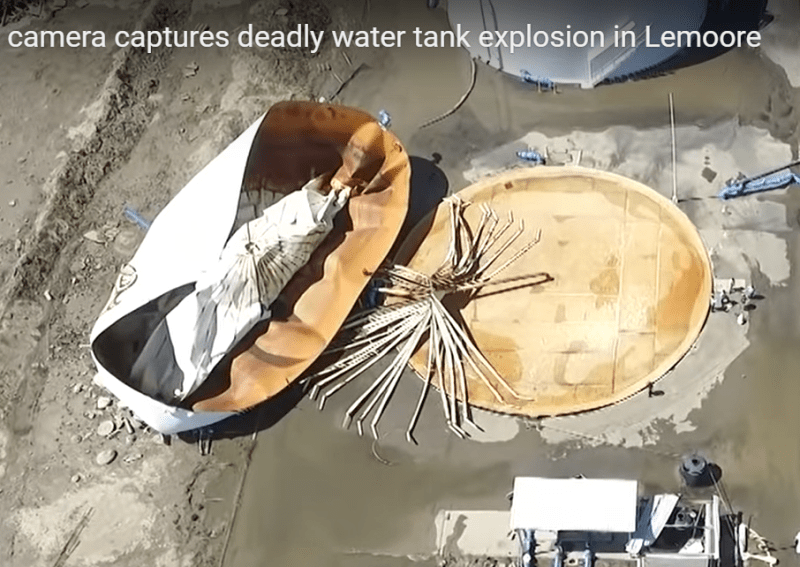fel3
Civil/Environmental
- Jul 9, 2001
- 921
This happened in my area. I am very familiar with Lemoore and its water system because twice I was at firms that served as the contract City Engineer and I have designed some elements of that water system. My first stint was long before the Well 7 site was developed. My second stint was after the well and first tank at this site had been constructed. I helped the engineer who designed the water treatment vessels and second storage tank at this site sort out some piping connections, but I can't tell you if it was the older or newer tank that just blew up and my records are in storage.
Apparently, someone was welding something to the outside of the tank and it sparked flammable gas inside the tank (that's what the City's Public Works director speculated about in an on-site interview I saw online). This tank appears to have had a good amount of water in it, so I'm having trouble understanding how a flammable gas got into the headspace of the tank. More details will certainly come in the next days/weeks/months.
============
"Is it the only lesson of history that mankind is unteachable?"
--Winston S. Churchill

